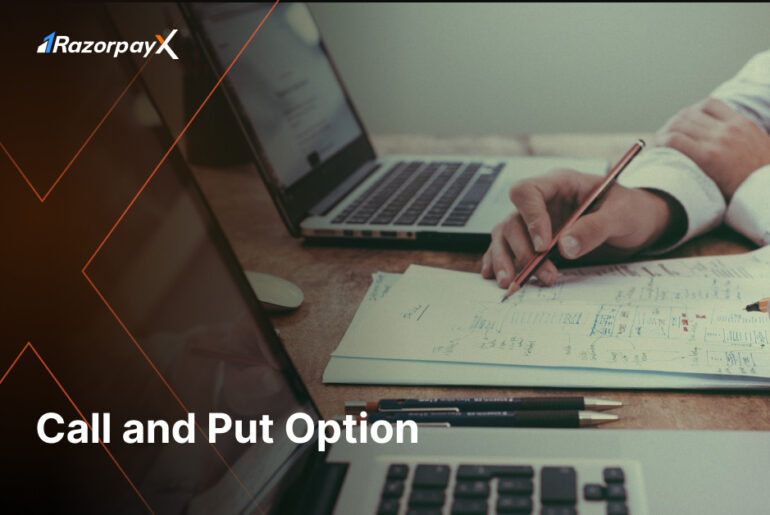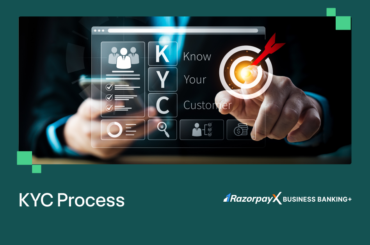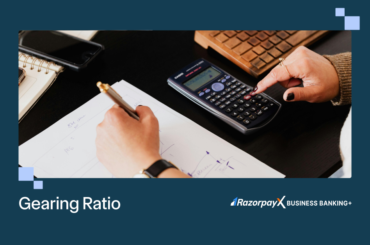Call and put options refer to the derivatives or financial contracts under which buyers have the right to purchase and sell an underlying asset. This asset can be a commodity, stock, bond etc., bought or sold within a certain date or strike price. Here, buyers only have a right and not an obligation to do so.
These options do not have a worth of their own and derive value from those of underlying assets. As both these options are buyer’s rights and not their obligations, hence these are regarded as asymmetrical options.
Table of Contents
Difference Between Call and Put Option
- Definition: The main difference between a call and a put option is that one deals with buying an asset and the latter deals with selling an underlying asset.
- Reason: Buyers of call options anticipate that stock prices will rise. Conversely, buyers of the put option expect the stock price will fall.
- Right & Obligation: The call option indicates the right of a buyer to buy an underlying asset at a fixed price at a future date. The price at which they will buy is pre-defined and is determined today. In contrast, the put option refers to the right of selling an asset at a future date, this price is again decided today. However, after selling, the seller falls under the obligation to purchase an asset if its buyer exercises his/her option.
- Future View: Traders who opt for a call option at the strike price have a negative view that the stock price will stay less than its strike price. The selling of this call option will lead to a break-even for sellers as they will get the strike price plus the premium fee.
However, for sellers of put options, they have a view that the stock price will stay above its strike price. Here, a break-even is the difference between the option’s strike price and its premium received.
- Chances of Profit: Opting for a call option will result in higher profit only if the value of the contract or underlying asset is increasing. In contrast, holders can ensure profit from a put option only if their underlying asset’s value is decreasing or falling.
- Percentage of Potential Gain: Potential gain in a call option is unlimited as there is no mathematical limitation in the underlying asset’s rising price. However, the potential gain in a put option has a limit as the price of an underlying asset can technically never be zero.
- Meaning of ‘in-the-money’ & ‘out-of-the-money’: Call and put option involves in-the-money or out-of-the-money scenarios. If the spot price of a call option is higher than that of its strike price, it is referred to as in-the-money. In case a call option’s spot price is less than that of its strike price, it is referred to as out-of-the-money.
Conversely, under a put option, in-the-money is termed when spot prices are less than strike prices. However, when the spot price of an underlying asset exceeds its strike price, it is an out-of-the-money put option.
- Effect on its Value: As the data of dividend nears, there is a loss of value of the call option. However, in the case of a put option, its value increases.
What are Option Premiums?
Options premiums refer to the amount that traders have to pay for a put or a call option. In other words, it is the cost that they have to bear for exercising this right.
Three factors namely volatility level, underlying contract and expiry time influence the option premium. Mathematically, the option premium can be evaluated as the sum of the option’s time value and the option’s intrinsic value.
How Do Call Options Work?
Investors opt for a call option only when they see that the underlying asset’s price has increased. This particular contract is formulated based on a securities exchange. In this option, the seller conducts a transaction with option buyers where the seller gives a right (not obligation) to buyers to obtain a particular security at a certain price.
How to Calculate Call Option Payoffs?
In a call option, payoffs are the profit or loss that option buyers or sellers earn. The strike price, expiry date and premium are variables depending on which computation of call options takes place. Even these variables help evaluate call option payoffs.
Formulas that are used for computing payoff and profit amount for call option buyers are-
- Payoff = Spot Price – Strike Price
- Profit = Payoff – Premium Paid
Formulas used for a payoff for call options for sellers are-
- Payoff = Spot price – Strike Price
- Profit = Payoff + Premium Paid
How Do Put Options Work?
Several ways are there using which investors can complete or close options trade. So, in case an option expires profitable, investors can exercise it. In case an option proves unprofitable, then its investor loses the money used to pay the option.
This put option carries chances of ensuring higher value which is indicative that the put option premium increases as an underlying stock price falls and vice versa. In addition, the put option, when exercised, extends investors a selling position in a stock. Hence, this option helps safeguard investors from downward moves in a long stock position.
How to Calculate Put Option Payoffs?
In the case of payoffs for put option buyers, the buyer’s profit or loss on the option is based on its underlying asset’s spot price. If the spot price is lower than its strike price when it expires, then buyers will benefit from massive profit.
Now in case of payoff for put option sellers, the seller levies a premium fee. Here, the profit or loss is based on its spot price. So, the amount of profit that the buyers make is equivalent to the loss that the seller incurs.
How Small Business Can Benefit from RazorpayX Offerings?
RazorpayX supercharges business baking, thus making it handy for small businesses and startup-ups in several regards. This platform uses integrated automated systems and helps in resolving all the banking needs of a business body.
With the help of this emerging business banking platform, businesses can now easily access RazorpayX-powered current accounts, automate payroll compliance, supercharge pay-outs, apply for loans, pay taxes etc., from a single dashboard.
In addition, small businesses can opt for the Forex funding facility. It will help them gather foreign capital in India under expert assistance. Even the team of forex experts will help offer a view on forex rates, RBI guidelines and filings.
Sign up for RazorpayX-powered Current Account
Frequently Asked Questions
Which is better among call or put options?
Whether a call option or a put option will prove to be a better option is dependent on stock price movement.
What are the basic terms that are related to call and put options?
Here are some of the basic terms one needs to know when dealing with the call and put option: Option premium: It refers to an amount that an option buyer will have to pay upfront to the seller of the option. This amount is non-refundable. Settlement: Options contracts or derivatives are sorted out as cash in India. Spot price: It refers to the underlying asset's current price within the stock market. Option expiry: It is the time when the option contracts will expire.
What is the strike price?
The strike price is the specified price at which the underlying asset is sold or purchased by a buyer after a specific period of time.
How are time decay and time value in option premiums related?
Time decay, or time to expiration, is a vital factor that influences the time value of option premiums. Time decay does not have a bearing on intrinsic value. However, it affects the option’s time value, thereby affecting the option premium significantly. In the case of the call and put option, the longer the time decay, the higher the option's time value, which is indicative of a higher option premium.





